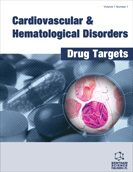Abstract
The purpose of this study was to evaluate the efficacy and safety of Cilnidipine tablets to treat Chinese patients with mild to moderate essential hypertension, and to examine the ability of Cilnidipine to lower blood pressure without eliciting unfavorable side effects. Medical databases and review articles were screened for randomized controlled trials that reported the effects of and adverse reactions to Cilnidipine and Amlodipine in treating Chinese patients with mild to moderate essential hypertension. The quality of the included studies was critically evaluated. A total of 547 articles were found, from which 11 articles met the inclusion criteria. The heterogeneity test, the efficacy analysis (Q statistic = 4.62, p = 0.91, I2 = 0%) and safety analysis (Q statistic = 3.73, p = 0.93, I2 = 0%) showed that Cilnidipine was equally effective and safe compared to Amlodipine. The funnel-plot displayed a symmetrical figure, indicating there was no publication bias, and all articles included described high quality trials. In conclusion, Cilnidipine is a useful agent to treat mild to moderate essential hypertension in China.
Keywords: Cilnidipine, essential hypertension, meta-analysis, systematic review, Calcium antagonists, Cilnidipine, Hypertension
Cardiovascular & Hematological Disorders-Drug Targets
Title:The Efficacy and Safety of Cilnidipine on Mild to Moderate Essential Hypertension: A Systematic Review and Meta-analysis of Randomized Controlled Trials in Chinese Patients
Volume: 12 Issue: 1
Author(s): Guoliang Xu, Haidi Wu, Bing Du and Ling Qin
Affiliation:
Keywords: Cilnidipine, essential hypertension, meta-analysis, systematic review, Calcium antagonists, Cilnidipine, Hypertension
Abstract: The purpose of this study was to evaluate the efficacy and safety of Cilnidipine tablets to treat Chinese patients with mild to moderate essential hypertension, and to examine the ability of Cilnidipine to lower blood pressure without eliciting unfavorable side effects. Medical databases and review articles were screened for randomized controlled trials that reported the effects of and adverse reactions to Cilnidipine and Amlodipine in treating Chinese patients with mild to moderate essential hypertension. The quality of the included studies was critically evaluated. A total of 547 articles were found, from which 11 articles met the inclusion criteria. The heterogeneity test, the efficacy analysis (Q statistic = 4.62, p = 0.91, I2 = 0%) and safety analysis (Q statistic = 3.73, p = 0.93, I2 = 0%) showed that Cilnidipine was equally effective and safe compared to Amlodipine. The funnel-plot displayed a symmetrical figure, indicating there was no publication bias, and all articles included described high quality trials. In conclusion, Cilnidipine is a useful agent to treat mild to moderate essential hypertension in China.
Export Options
About this article
Cite this article as:
Xu Guoliang, Wu Haidi, Du Bing and Qin Ling, The Efficacy and Safety of Cilnidipine on Mild to Moderate Essential Hypertension: A Systematic Review and Meta-analysis of Randomized Controlled Trials in Chinese Patients, Cardiovascular & Hematological Disorders-Drug Targets 2012; 12 (1) . https://dx.doi.org/10.2174/187152912801823165
| DOI https://dx.doi.org/10.2174/187152912801823165 |
Print ISSN 1871-529X |
| Publisher Name Bentham Science Publisher |
Online ISSN 2212-4063 |
 41
41
- Author Guidelines
- Bentham Author Support Services (BASS)
- Graphical Abstracts
- Fabricating and Stating False Information
- Research Misconduct
- Post Publication Discussions and Corrections
- Publishing Ethics and Rectitude
- Increase Visibility of Your Article
- Archiving Policies
- Peer Review Workflow
- Order Your Article Before Print
- Promote Your Article
- Manuscript Transfer Facility
- Editorial Policies
- Allegations from Whistleblowers
- Announcements
Related Articles
-
Subject Index To Volume 12
Current Pharmaceutical Design New Biotechnological Methods to Reduce Oxidative Stress in the Cardiovascular System: Focusing on the Bach1/Heme Oxygenase-1 Pathway
Current Pharmaceutical Biotechnology Statins in Aortic Disease
Current Pharmaceutical Design Current and Potential Future Pharmacological Approaches for Non- Alcoholic Fatty Liver Disease
Current Vascular Pharmacology Maternal and Fetal Outcomes in Iranian Patients with Systemic Lupus Erythematosus: A Five-Year Retrospective Study of 60 Pregnancies
Current Rheumatology Reviews Teaching a Lifestyle Intervention for Reversing Impaired Fasting Glucose, Hyperlipidemia and Obesity/Overweight to a Cohort of Local Physicians
Current Nutrition & Food Science Effects of Medroxyprogesterone Acetate on the Risk of Cardiovascular Disease in Postmenopausal Women Receiving Estrogen
Vascular Disease Prevention (Discontinued) Editorial [ Hot Topic : Viagras Cousins - Towards a New Generation of Phosphodiesterase Inhibitors (Guest Editor: Philip Thompson) ]
Current Topics in Medicinal Chemistry Incretins and Lipid Metabolism
Current Medicinal Chemistry Dysglycemia and Abdominal Obesity
Current Vascular Pharmacology Evaluation of Endothelial (dys)Function, Left Ventricular Structure and Function in Patients with Chronic Kidney Disease
Current Vascular Pharmacology Vitamins and Type 2 Diabetes Mellitus
Endocrine, Metabolic & Immune Disorders - Drug Targets Arterial Wall Structure and Dynamics in Type 2 Diabetes Mellitus Methodological Aspects and Pathophysiological Findings
Current Diabetes Reviews Nitric Oxide: A Key Mediator of Biofilm Dispersal with Applications in Infectious Diseases
Current Pharmaceutical Design Peripheral Arterial Disease and Oxidative Stress
Vascular Disease Prevention (Discontinued) Cellular Membranes and Lipid-Binding Domains as Attractive Targets for Drug Development
Current Drug Targets Inflammation, Endothelial Dysfunction and Arterial Stiffness as Therapeutic Targets in Cardiovascular Medicine
Current Pharmaceutical Design The Role of Pemetrexed Combined with Targeted Agents for Non-Small Cell Lung Cancer
Current Drug Targets A Multi-Endpoint Evaluation of Cytochrome P450 1A2, 2B6 and 3A4 Induction Response in Human Hepatocyte Cultures After Treatment with β - Naphthoflavone, Phenobarbital and Rifampicin
Drug Metabolism Letters Clinical Implications of COX-1 and / or COX-2 Inhibition for the Distal Gastrointestinal Tract
Current Pharmaceutical Design


























